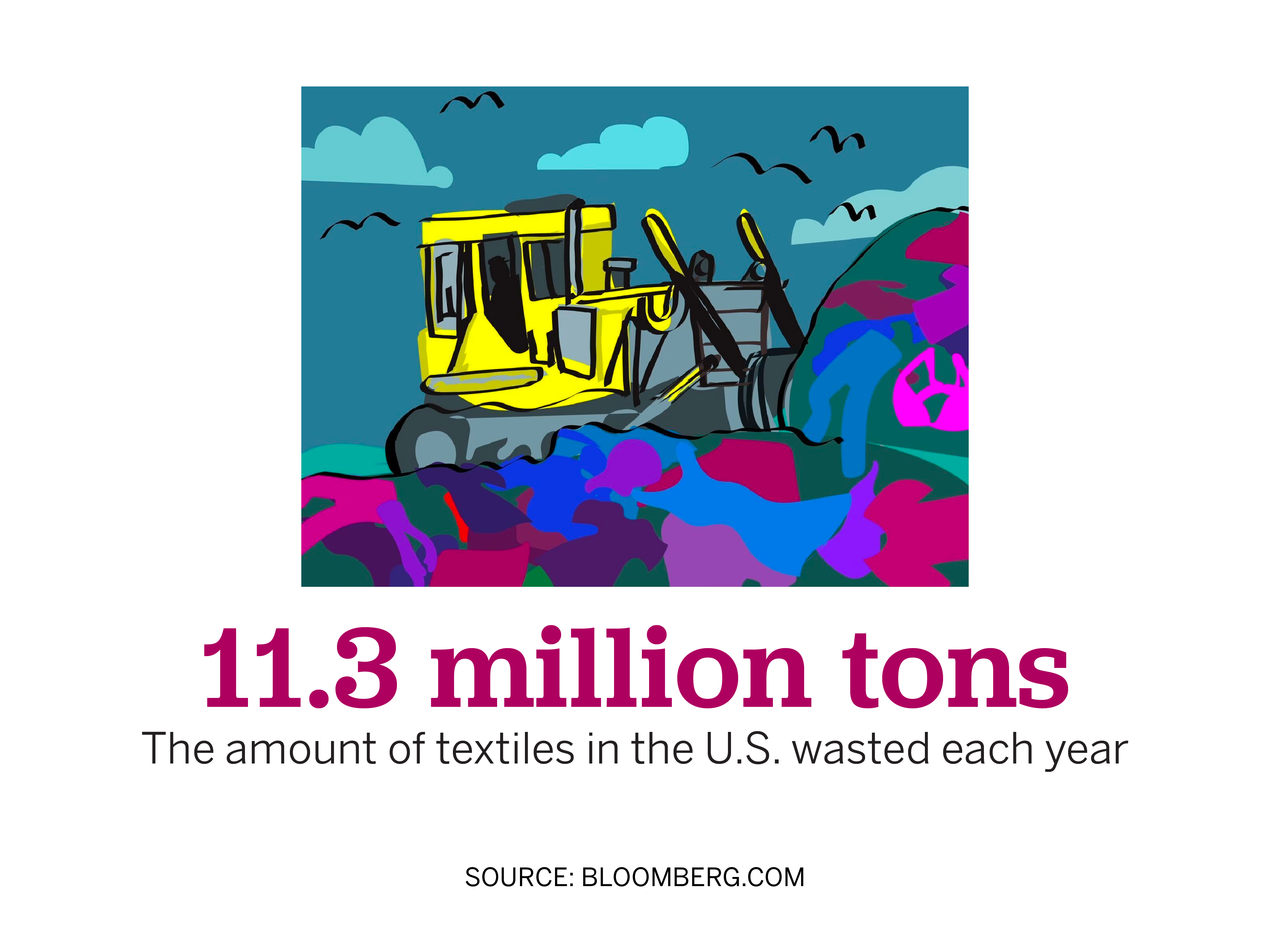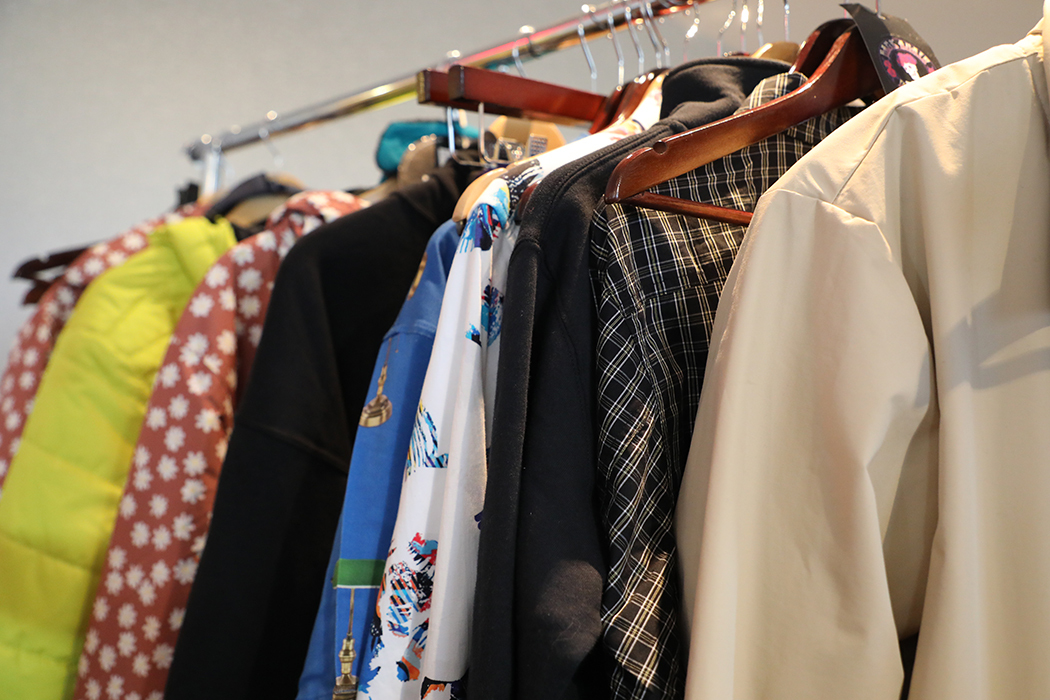Kathryn Hendry doesn’t feel pressured to buy clothes for everyday class wear, but she does feel the need to update her wardrobe every year when it comes to “going out” tops.
“I bought new clothes to go out my freshman year and then again this year,” Hendry, a sophomore majoring in marketing and advertising at Syracuse University. “I feel like the trend cycle happens faster with the top exit and shows up in a more public way.”
There seems to be an unspoken pressure for students on SU’s campus to constantly buy new clothes, especially at the beginning of the school year. Students will often wear a fashionable piece once before throwing it away and contributing to the 11.3 million tons of textiles the US wastes each year.
“There is a certain pressure to wear something different every time you go out. It’s silly, but it’s a real thing,” said Michela Galego, a sophomore communication design student.
As a result of store closures during the pandemic, consumers swapped fast-fashion staples such as Zara and H&M for Shein, a privately owned Chinese e-commerce site known for low-cost, trendy clothing.
Galego said she feels guilty about shopping at fast fashion giants like Shein and Cider. She likes to keep up with trends and wear new pieces, but can’t afford to spend $60 on an Urban Outfitters top that she can only wear once.
Shein is valued at $100 billion, higher than the combined value of H&M and Zara. Every day, Shein updates their website with an average of 6,000 new styles.
“In Syracuse the shopping is very excessive, everyone is wearing the newest spots of certain brands. It’s very competitive to keep up,” said Filipa Alloul, an undecided sophomore in the College of Arts and Sciences.
Alloul shared that she used to shop at Shein during the pandemic, but stopped because of the quality of the clothes and the backlash she saw online about the company’s ethics.
Shein workers are reported to work 75 hours a week in unsafe and unsanitary factories, barely making a living wage. About 95% of Shein styles are made with some plastic-based material such as polyester, nylon, acrylic or elastane. These materials make the recycling process of textile waste extremely difficult and constitute the largest source of microplastic pollution in the world’s oceans.

But college students continue to shop at Shein because of the range of sizes and extremely cheap prices.
“It makes more sense to me to buy a $6 Shein top. My parents don’t finance shopping,” said Galego.
To change the one-use relationship with clothing, Abigail Minicozzi, a junior majoring in fashion design, said it’s important to educate people on the ethical and environmental impact of fast fashion.
“Consumers often don’t think about what effort went into making the product, what materials were used, what the working conditions were and what the pay was,” Minicozzi said.
In 2021, Minicozzi and two others opened The Cherry Pit, a curated vintage store located in the basement of the Wildflower Armory. Cherry Pit has women’s and unisex clothing options at the lowest prices worldwide.
As a fashion professional, Minicozzi spoke about her love for unique vintage textiles and the appreciation she feels when a garment has lasted her for years. She loves being able to sell clothes she finds at thrift stores that may not be her style or fit.
“It’s nice to give clothes to people in a closed system that’s not harmful to the environment,” Minicozzi said. “When people buy things from a few stores in the mall, they don’t think about how quickly the item was made and how harmful the textiles are to the environment.”
To keep The Cherry Pit up to date with ever-changing trends, Minicozzi uses her walk to class as a way to get inspiration for what other SU students are wearing. She talked about the importance of timeless pieces that will never go out of style and can be worn longer, like vests and belts for fall and chunky sweaters for winter.
Louisa Friedman, a sophomore majoring in communication and rhetoric, said she often rejects fast-fashion and trendy brands to invest in more expensive, durable and higher-quality pieces.
“If I’m going to spend money on clothes, I might as well invest in pieces that will last me a little while and actually fit me well,” Freedman said. “I wish I could save more, but sometimes it’s so hard to find my size.”
Paul Sausville, a junior studying paper and chemical engineering at SUNY ESF, said it can be overwhelming and difficult to find specific sizes at a thrift store like Goodwill or the Salvation Army. Thrifting at corporate locations takes time, patience, and it’s often unlikely that the consumer knows where the department store is donating money, Sausville said.
Sausville decided to stop the junk clothing process with his company, The Pits Vintage.

Sausville runs The Pits Vintage on Instagram and hosts pop-ups at student shows where he features pre-owned and vintage clothing curated for the styles he sees SU and ESF students sporting on campus.
His clothing ranges from $10 to $25 for shirts and pants and $20 to $40 for heavy winter coats.
“Buying vintage clothing is just a win, win, win for everyone,” Sausville said. “It’s cheaper than buying something new, it’s more durable than any fast fashion clothing item, and it’s also saving something from going to landfill that is often only worn once.”
Sausville said she can’t remember the last time she bought a new item of clothing. When you find a vintage piece you like, it’s already seen some wear and has proven to last for years to come.
“It’s amazing that Shein’s clothes don’t fall apart in shipping,” said Sausville, immediately associating the term fast fashion with Shein, a company he sees as his big sister to mass-order shipping.
Sausville likes to think about the person behind every stitch and wishes there were more like-minded people on campus who value the environment and a company’s ethics over a poorly made $8 sweater from Shein.
Curbing the compulsive buying of cheap clothing is only in the hands of students, Minicozzi said. Understanding the disconnect between product and consumer will slow the cycle of trends coming in and out of closets, she said.
“Clothing was produced at a level where consumers bought items when they grew out of something or when there was a change in season,” Minicozzi said. “I continue to see students over-consume clothing instead of prioritizing quality materials, craftsmanship and ethics.
Published on September 21, 2022 at 10:35 pm




